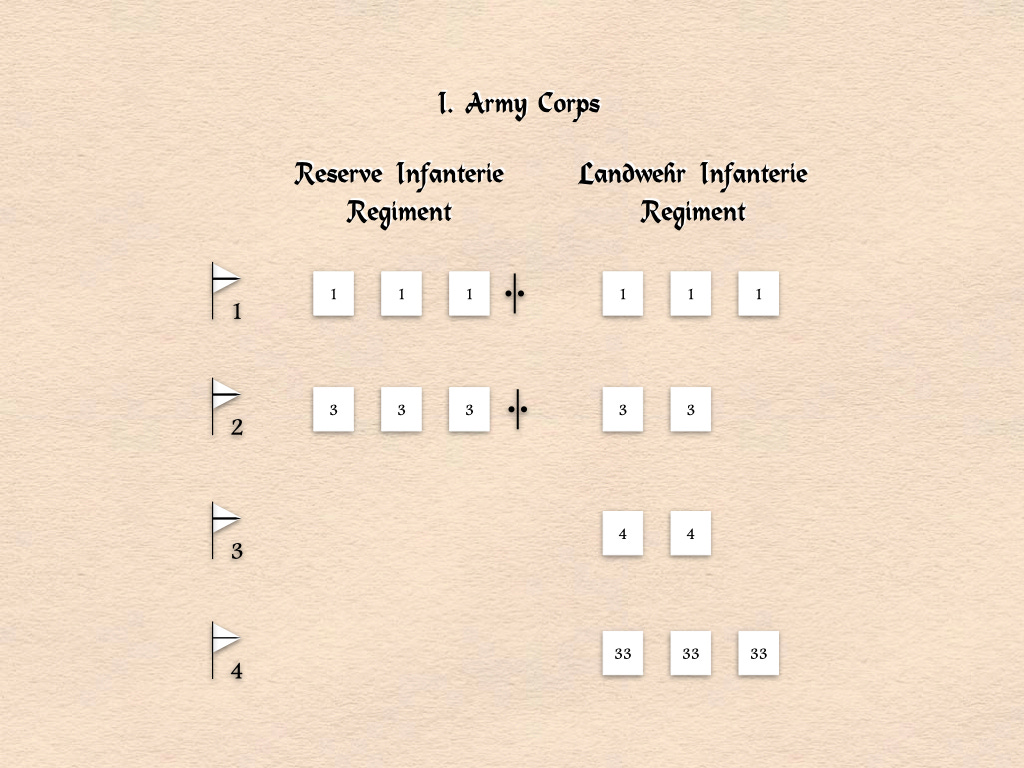The territory of the Prussian province of East Prussia coincided with that of two peacetime army corps. The I. Army Corps District, which had been created at the end of the Napoleonic Wars, was the older of the two. The XX. Army Corps, which had been organized in 1912, was much younger.
The ability of the two East Prussian army corps to raise second-line infantry units suffered greatly from the relatively small populations of their recruiting grounds. Indeed, the migration of men of military age to the big industrial cities of western Germany created a situation in which many East Prussian regiments lost many of the reservists they had trained to their counterparts in other parts of the Empire.
In response to this problem, the Prussian War Ministry embraced two solutions. The first of this reduced the number of second-line units that the I. and XX. Army Corps were obliged to raise at mobilization. (In particular, like army corps on the French frontier, they were relieved of the requirement to raise brigade Ersatz battalions.) The second of these transferred thousands of reservists living in western Germany to mobilization stations in East Prussia. Thus, for example, only half of the reservists who reported for duty with the 3rd Reserve Infantry Regiment came from East Prussia. The rest hailed from the city of Berlin and the province of Hanover.1
Upon mobilization, each of the East Prussian army corps organized two Reserve infantry regiments. In addition to this, they raised a total of six Landwehr infantry regiments, two of two battalions apiece and four with three battalions each.2
Sources: This post is based on data gleaned from the organizational appendix to the first volume of the German official history; Hermann Cron (C.F. Colton, translator) Imperial German Army: Organization, Structure, Orders-of-Battle (Solihull: Helion, 2002); Löbell's Jahresberichte über das Heer- und Kriegswesen [Löbell’s Military and Warfare Annual], 1913, pages 12 and 13; and Eike Mohr, Heeres- und Truppengeschichte des Deutschen Reiches und seiner Länder 1806 bis 1918 (Osnabrück: Biblioverlag, 1989) pages 769 and 778.
Verein der Offiziere des ehemaligen Preußischen Reserve-Infanterie-Regiment Nr. 3., Reserve-Infanterie Regiment Nr. 3 (Oldenburg i. O. : Stalling, 1926) page 10
As is the custom of this series, only “mobile” Landwehr units are counted as second-line units.







